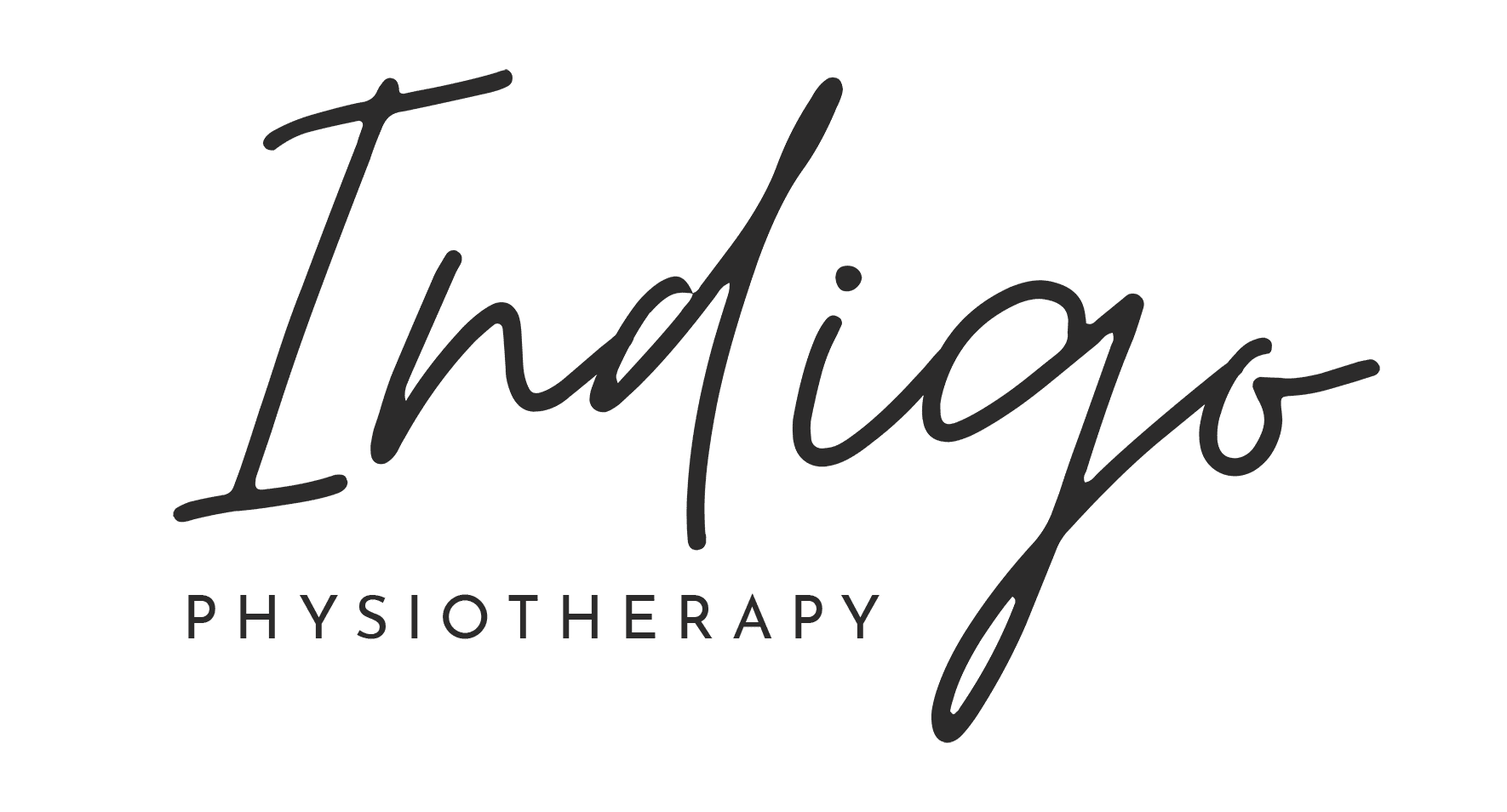Endometriosis affects millions of women worldwide, yet it remains widely misunderstood and often misdiagnosed. In fact, 1 in 10 women worldwide are living with endometriosis.
Endometriosis is so commonly minimized to “Oh, you have painful periods”. While this is true for many people managing endometriosis – there are many more layers to this condition.
Before we go any further, remember if you are missing work or having to call in sick due to period pain – alarm bells should be going off. Being debilitated by pain is not normal. Period.
In this blog, we’ll delve into the complexities of endometriosis. We’ll cover its symptoms, treatment options, and the role of pelvic floor therapy in managing this condition.
What is Endometriosis?
Your uterus is lined with endometrial tissue. This lining is called the endometrium. With each menstrual cycle, your body grows a new endometrium to prepare for a fertilized egg.
If you have endometriosis, the endometrial tissue grows outside its natural site, the uterine lining.
Because the endometrial tissue is “told” to grow or recede during a hormonal cycle, this growth cycle happens wherever this tissue is found in the pelvic or abdominal cavity. Adhesions grow over time as scar tissue, connective tissue, and layers bind to each other. These adhesions can restrict the normal movement of these organs or tissues, leading to pain, dysfunction, and more.
The exact cause of the condition remains unknown. However, experts believe factors like hormonal imbalances, genetic predisposition, and immune system dysfunction play a role.
What Are The Symptoms of Endometriosis?
Extremely Painful Periods (Dysmenorrhea)
Endometriosis often brings excruciating menstrual cramps, known as dysmenorrhea. These severe pains can disrupt daily life and can radiate from the lower abdomen to the lower back and thighs. Some endure an endometriosis flare-up not just during menstruation but before and after, too.
Heavy Periods (Menorrhagia)
Endometriosis can lead to heavy menstrual bleeding, a condition called menorrhagia. If you’re dealing with this you have to frequently change your sanitary products and might even be dealing with anemia due to blood loss. Those with this symptom often pass large blood clots and experience prolonged bleeding, sometimes requiring overnight protection.
Menstrual Problems
Endometriosis can mess with your menstrual cycle’s normal flow, making it irregular. Some folks might have shorter or longer cycles than the usual 28 days. Others might find their periods unpredictable, with random bleeding episodes popping up unexpectedly.
Stomach issues
Feeling bloated is a typical endometriosis symptom, especially during periods. It happens when fluid and gas build up in your belly, making you feel uncomfortably full and making your tummy look swollen. Bloating can make existing pelvic pain worse and mess with your digestion.
Research demonstrates that there is a strong connection between having endometriosis and SIBO (Small Intestinal Bacterial Overgrowth). Gastrointestinal symptoms are as common as gynecological symptoms in people with endometriosis. Dr Orbuch, one of the leading specialists in endometriosis in the country, writes that over 90% of women diagnosed with endometriosis actually present with Gastrointestinal (GI) symptoms as their initial symptoms. Bloating is the most common symptom, reported by around 83% of women diagnosed with endometriosis.
Since many of the symptoms present the same as irritable bowel syndrome (IBS), many people with endometriosis are initially misdiagnosed with IBS rather than endometriosis.
Pelvic, Hip, and Back Pain
Endometriosis-related pelvic pain tends to stick around and can change severity during your cycle. You might feel it as a dull ache, cramps, or sharp stabs in your pelvic area. Those endometrial growths can irritate nearby nerves, causing pain in your hips, lower back, and rear end.
However, most significantly, these growths alter the dynamics of the connective tissue (fascia), causing fascia-related pain syndromes, muscle spasms and musical tension, which all lead to pain.
Pain During Sex
Feeling pain during sex, known as dyspareunia, is a common issue with endometriosis. It can happen with penetration, deep thrusts, or even after sex. Muscle spasms and pelvic floor hypertonicity (when muscles in the pelvic floor become too tense and are unable to relax) can cause this pain.
Plus, the psychomotor implications of a pain cycle (i.e. both the psychological and physical aspects) can also contribute to experiencing pain during sex.
Trouble Getting Pregnant
Endometriosis can make it challenging to get pregnant or increase your risk of infertility. This happens because it messes with your pelvic anatomy, forms adhesions, and affects your ovaries.
Scar tissue and endometrial growths can block your uterine tubes, stopping eggs from moving from your ovaries to your womb and making it harder for them to get fertilized.
Plus, the inflammation and hormonal changes from endometriosis can influence how well or how regularly your body releases eggs that are ready for fertilization. It also affects the implantation process of a fertilized egg.
Urinary Problems with Endometriosis
Endometriosis can mess with your urinary system, giving you symptoms like needing to urinate a lot and feeling like you have to go right away. This happens because the growths from endometriosis can push on your bladder, making you feel the urge to go all of a sudden.
The growths can also cause the muscles around your bladder to spasm, increasing the urinary urge and frequency. Pelvic floor muscle spasms add to this, and can also lead to feeling like you need to “push” urine out to void completely.
You might also urinate more often because the growths irritate or stick to your bladder. And sometimes, urinating can hurt because of inflammation or irritation from the growths near your bladder.
Why is Endometriosis So Hard to Diagnose?
Pinpointing endometriosis can be a puzzle due to its varied symptoms and resemblance to other conditions.
An MRI or ultrasound results can not definitively rule out endometriosis. The gold standard for diagnosis is laparoscopy. However, determining the best diagnostic approach often requires coordination with your healthcare team.
Unfortunately, it’s estimated that it can take up to 7.5 years from symptom onset to diagnosis. This is due to a lack of expertise, awareness and medical research on endometriosis.
Additionally, women’s pain is often minimized, and they’re not believed. This is even more severe in the Black community where, on average, a Black person is about 50% less likely to get diagnosed with endometriosis.
Fortunately, this is changing thanks to ongoing advocacy and more healthcare dollars being invested in endometriosis
So, continuously advocating for your care is crucial in navigating this journey. Here are some of the factors that contribute to this diagnostic challenge:
- Vague Symptoms: Symptoms like pelvic pain and heavy periods overlap with other conditions, leading to misdiagnosis or delayed diagnosis.
- Normalization of Symptoms: Many endure symptoms from a young age, accepting severe menstrual pain as normal until it becomes unbearable.
- Lack of Healthcare Provider Awareness: Misunderstanding persists among healthcare providers, resulting in dismissive attitudes and inadequate treatment.
- Diagnostic Delays: Multiple consultations, tests, and surgeries are often needed for a definitive diagnosis, causing delays in diagnosis and treatments.
- Silent Endometriosis: Some experience no symptoms, delaying diagnosis until fertility issues arise or unrelated testing reveals the condition.
- Limited Access to Specialized Care: Accessing experts in endometriosis diagnosis and care can be tough, particularly in underserved areas.
- Stigma and Misconceptions: Stigma and misconceptions hinder seeking timely care, perpetuating diagnostic challenges and treatment disparities.
Common Misconceptions of Endometriosis
Misconception 1: Endometriosis is just heavy periods
Endometriosis is often misunderstood as just causing heavy menstrual bleeding. While this can be a symptom, the condition is far more complex, with a range of symptoms that extend beyond menstruation, as we just discussed.
Misconception 2: Pain is the only symptom
Pain is not the only symptom: bowel and bladder symptoms associated with pelvic floor dysfunction are common: urinary symptoms, loose stools or constipation, infertility, abdominal pain and bloating (“endo belly”)
Evidence suggests that endometriosis may affect 1 in 2 women experiencing infertility, and it’s only detected once they start investigating fertility concerns.
Misconception 3: Endometriosis only affects the pelvic region
While endometriosis predominantly affects pelvic organs like the uterus and ovaries, it can extend beyond this region. Endometrial tissue may implant and grow in various areas of the body, leading to symptoms in unexpected locations.
Recognizing that endometriosis can impact multiple organs is crucial for accurate diagnosis and comprehensive treatment.
Misconception 4: Endometriosis improves after menopause or pregnancy
There is a common misconception that endometriosis symptoms subside after menopause or pregnancy. While hormonal changes during these phases may provide temporary relief for some individuals, they do not guarantee a permanent cure.
This is due to the fact that the hormone cycle that causes the endometrial tissues to grow and then recede or shed is put on hold while you are pregnant and often when you’re lactating. During this time, the symptoms may decrease. However, the pain, adhesions and muscle spams that were byproducts of endometriosis may continue to cause pain and dysfunction regardless of hormonal suppression or changes.
Postmenopausal individuals with a history of endometriosis may still experience symptoms, particularly if they have persistent pelvic floor-related issues. Additionally, the impact of pregnancy on endometriosis symptoms varies among individuals, with no definitive evidence supporting it as a cure.
Treatment Options For Endometriosis
Managing endometriosis is no easy feat, but there are treatment options designed to alleviate symptoms and enhance daily life, even if a cure remains elusive.
Pelvic Floor Therapy
Endometriosis often wreaks havoc on the pelvic floor, causing distress to muscles, ligaments, and nerves in the pelvic and abdominal regions. This dysfunction can trigger a cascade of discomforts, from urinary and bowel issues to pain during intercourse and daily activities.
That’s where pelvic floor physical therapy comes into play as a vital ally. Teaming up with a skilled therapist empowers individuals with endometriosis to confront pain, bowel and bladder concerns, fertility worries, and other muscular woes head-on.
Evidence suggests positive improvements when treated with pelvic floor physical therapy, particularly in cases requiring surgical intervention.
It’s time to feel good again- work with a pelvic floor PT to manage endometriosis symptoms.
Medications
Hormonal therapies, such as birth control pills, progestins, and GnRH agonists, can help regulate menstrual cycles and reduce pain. It’s important to talk to your medical practioner to discuss all relevant options for treatment.
If you suspect you might have endometriosis and you don’t know where to start, check out Nancy’s Nook. It has a ton of information on endometriosis and a valuable resources section that talks you through how to find a doctor and more.
Surgery
Laparoscopic surgery is often done to remove (excise) endometrial growths on the uterus and ovaries. A laparoscopic procedure is a minimally invasive surgery where incisions approximately ½ inch long are made in two to three areas of the abdomen.
The laparoscope is a thin tube with a camera attached, which passes through those small incisions for the surgeon to better visualize the inside of the abdomen. The surgeon can then excise the endometriosis via small instruments passed through those openings.
If the endometriosis is so severe that laparoscopy is not an option, a full incision called a laparotomy may be required. In the past, a hysterectomy may have been recommended for severe cases, but this is no longer the case and excision surgery is now considered the gold standard for treatment.
Related Conditions to Endometriosis
Endometriosis shares symptoms and presentations with several other conditions, all of which can contribute to pelvic floor-related issues.
Adenomyosis: This condition involves the invasion of uterine lining tissue into the muscle of the uterus. It can present as diffuse or focal, spreading throughout the uterus or clustering in specific areas.
Interstitial Cystitis/Bladder Pain Syndrome: Individuals with this condition experience unpleasant sensations such as pain, pressure, or discomfort related to the urinary bladder. Symptoms will persist for more than six weeks without evidence of infection or other identifiable causes.
Uterine Fibroids: These are muscular tumors that develop within the uterine wall. They can cause symptoms similar to those of endometriosis, including pelvic pain and heavy menstrual bleeding.
Polycystic Ovary Syndrome (PCOS): PCOS is a hormonal disorder characterized by enlarged ovaries with small cysts on their outer edges. While it primarily affects ovarian function, PCOS can also manifest with symptoms that overlap with those of endometriosis, such as pelvic pain and irregular menstrual cycles.
How Indigo Supports Individuals Living With Endometriosis
Breaking up Scar Tissue and Adhesions
Our job is to help your body heal from scar tissue and adhesions caused by endometriosis or past surgeries. These adhesions can stick to nearby tissues, causing pain and limiting movement.
We use techniques such as special manual therapy, visceral, myofascial, and scar release techniques through our specially trained experts. This helps to break up scar tissue so your tissues can glide, slide, move and activate in a more normal way so you can resume your life with less pain and more function.
Addressing Pain with Various Techniques
We offer a variety of treatments, like manual therapy and pain management, to help with the complex pain of endometriosis. Whether it’s pain during sex, using tampons, or just everyday discomfort, we personalize our approach to relieve symptoms. To provide thorough relief, we focus on areas like the lower back, abdomen, inner and outer thighs, and buttocks.
Calming the Central Nervous System
Endometriosis can make your nervous system more sensitive to pain. Our physical therapy focuses on calming your nerves to reduce pain and help you relax. By targeting the root causes of pain processing in your nervous system, we aim to improve your comfort and quality of life.
Promotion and Regulation of Bowel and Bladder Health
Many people with endometriosis experience digestive and urinary issues. We help by promoting healthy bowel and bladder function and easing symptoms like constipation, diarrhea, and frequent urination.
Our goal is to improve your overall comfort and well-being by optimizing how your digestive and urinary systems work. We do this by creating a bowel and bladder routine and giving guidance for the release of bowel movements without straining or pushing.
Tailored Exercise Programs
Exercise can be critical in managing some endometriosis symptoms when done correctly and in doses relative to your cycle and fatigue factors. So, we create personalized exercise plans based on your menstrual cycle, promoting wellness even during times of pain or fatigue.
These exercises boost both your physical and emotional health, helping you stay strong and resilient against the challenges of endometriosis.
Comprehensive Symptom Management
We believe in treating all aspects of endometriosis symptoms, not just the pain. Our approach considers your entire well-being, including your lifestyle and individual needs. By providing this comprehensive care, we strive to enhance your overall quality of life and empower you to thrive despite living with endometriosis.
Endometriosis shouldn’t dictate your life. Reach out to healthcare experts, including pelvic floor therapists, to start your path toward relief and empowerment. With the right support, you can regain control and live life to the fullest.
Here at Indigo, we work in collaboration with a patient’s care team for a more holistic approach to care. In fact, most of our clients with endometriosis are referred by another member of their care team. In some cases, a person’s OBGYN or UROGYN may refer them to us. For others, we’re referred by their fertility team.
While we cannot diagnose endometriosis, we try to play a part in early detection and diagnosis by educating our community, including our readers.
Book a visit with Indigo today and start taking back control.
Share with someone you know so no one needs to suffer in silence anymore.
Dr. Sam DuFlo







